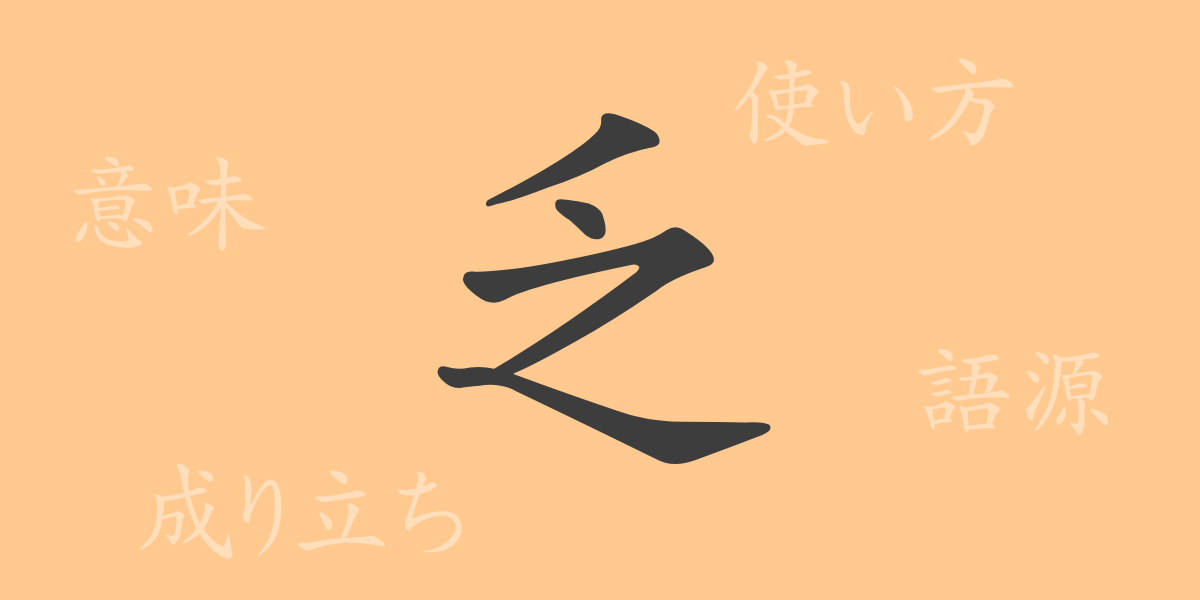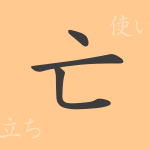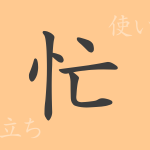The meaning of a single kanji character is deeply rooted in its shape and history. The commonly used Japanese kanji “乏 (とぼしい, toboshii)” also speaks volumes through its form and history. In this article, we will delve into the charm of “乏 (とぼしい, toboshii)” from its origins to its modern-day usage. Whether you are a learner of the Japanese language or a native speaker, the world of “乏 (とぼしい, toboshii)” is full of new discoveries.
Origin of 乏 (とぼしい, toboshii)
The kanji “乏 (とぼしい, toboshii)” is a character that originated in ancient China. This character was initially used to represent the meaning “few” or “scarce.” Its shape originally depicted an outstretched hand, indicating a state of holding nothing, or “having nothing” and “being insufficient.” Over time, this kanji came to mean “scarce” and has retained this meaning to the present day.
Meaning and Usage of 乏 (とぼしい, toboshii)
The kanji “乏 (とぼしい, toboshii)” carries meanings such as “insufficient,” “lacking,” and “few.” In everyday language, it can be used not only for tangible items but also for abstract concepts. For example, expressions like “資源が乏しい (しげんがとぼしい, shigen ga toboshii)” meaning “resources are scarce,” or “経験が乏しい (けいけんがとぼしい, keiken ga toboshii)” meaning “lacking experience” are common. This kanji is often used to express negative situations, making it a very useful expression for indicating a state of insufficiency.
Reading, Stroke Count, and Radical of 乏 (とぼしい, toboshii)
The reading and basic information of the kanji “乏 (とぼしい, toboshii)” are as follows:
- Reading: In On’yomi (Chinese reading), it is read as “ボウ (ぼう, bou),” and in Kun’yomi (Japanese reading), it is read as “とぼしい (とぼしい, toboshii).”
- Stroke Count: “乏 (とぼしい, toboshii)” has a total of 4 strokes.
- Radical: The radical is “丿 (のごめ, のごめ, nogome),” also known as “hen.”
Idioms, Proverbs, and Expressions Using 乏 (とぼしい, toboshii)
Here are some idioms, proverbs, and expressions that include “乏 (とぼしい, toboshii)”:
- 資源が乏しい (しげんがとぼしい, shigen ga toboshii) – Resources are scarce.
- 表情が乏しい (ひょうじょうがとぼしい, hyoujou ga toboshii) – Lacking in facial expression, making emotions hard to read.
- 乏しい経験 (とぼしいけいけん, toboshii keiken) – Lacking experience.
These expressions are frequently used in daily life and business settings, helping to convey situations of insufficiency.
Summary of 乏 (とぼしい, toboshii)
The kanji “乏 (とぼしい, toboshii)” is a character with a simple shape that carries a wealth of meaning. It is used to express the lack of various things, such as resources, emotions, and experiences. As an important character in the commonly used kanji in Japan, understanding “乏 (とぼしい, toboshii)” is essential for deepening your comprehension of the Japanese language. We hope this article helps enhance your understanding of the kanji “乏 (とぼしい, toboshii)” and contributes to richer Japanese expressions.

























